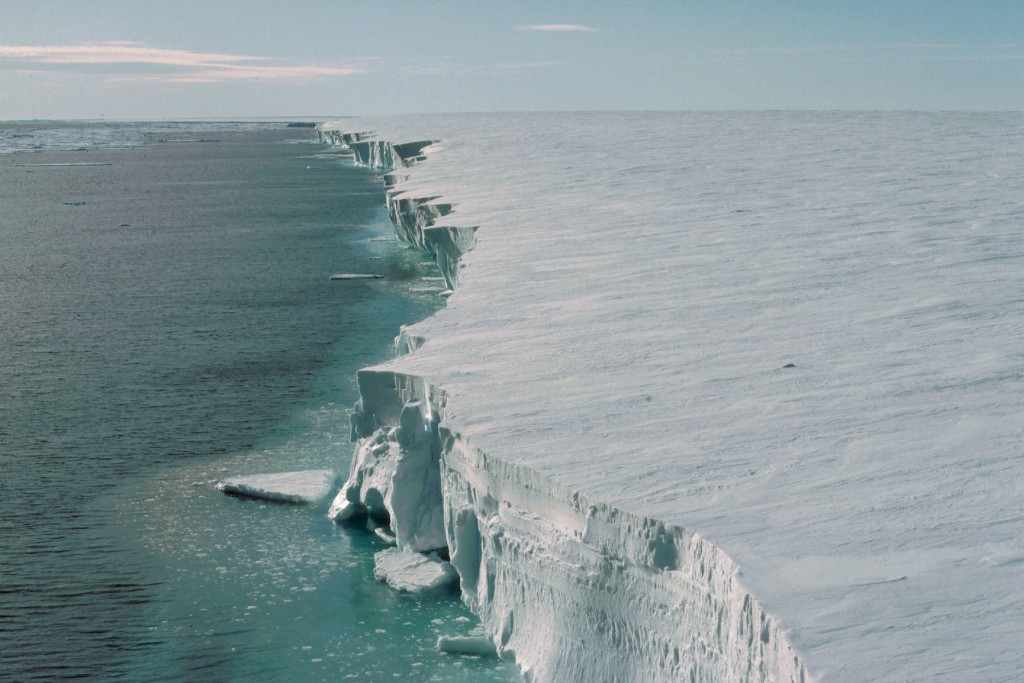
Edge of the Filchner-Ronne Ice Shelf in the Weddell Sea, Photo: Ralph Timmermann, Alfred Wegener Institute.
By Torben Stichel, PhD., University of Hawaii at Manoa
The ongoing debate on global climate change tends to give the impression that there is nothing new on this front. Of course, the candidates and media outlets involved in the upcoming election for the presidency of the United States will again use this topic as a political football. People will once again get the impression that climate change has only been invented to satisfy the interests of others. However, there will be no satisfaction or benefits with climate change. There will certainly be environmental change, but that’s about all that is certain.
I just read an article in Nature entitled “Twenty-first-century warming of a large Antarctic ice-shelf cavity by a redirected coastal current” by Hartmut Hellmer and his co-authors published this month.
Actually, I read it after I had a Skype call with my mum. She said that there was something in the news dealing with ice in Antarctica (Every time there is something in the news about this continent, she thinks it has to do with my research, because I was there on an expedition in the late austral summer of 2008. And again, nope, it wasn’t me.) It caught my attention, however, because according to her (with no scientific background at all), the main finding was about ice-shelf melting in the Weddell Sea. To my knowledge, the recent reports on ice-shelf melting by increased seawater temperature caused by climate change mostly dealt with the western side of the Antarctic continent. The ice-shelf in the Weddell Sea was generally considered to be stable. On a German news site, I found a report on what my mum saw in the news. To be honest, I did not really bother with what the journalist understood out of it (with all due respect) and browsed straight to nature.com to download the original study the article referenced
The authors describe with their modeling simulations different scenarios for projected atmospheric greenhouse gas concentrations over a period of 200 years. The reason why the ice-shelf in the Weddell Sea ice-shelf has been considered as largely stable before is due to that fact that reduced sea ice formation in a warmer climate prevents denser water from penetrating to the grounding line (theboundarybetweenthefloating ice shelf and the bedrock ice thatfeedsit) to erode the ice-shelf. Isn’t that ironic?
In this study, the authors also discuss that changes in sea-ice formation due to a warmer ocean might influence the circulation of near surface waters in the Weddell Sea. Such a change would still allow dense, but now warmer water to penetrate underneath the ice-shelf, causing instability of the entire Filchner-Ronne Ice Shelf. The melting ice underneath would increase from the present 82 billion tonnes to approximately 1,600 billion tonnes per year. Since we keep messing around with our planet, consequences will be profound in the projection of future sea level rise (until now at ~3.3 mm per year).
Reference
Hellmer, Hartmut H, Frank Kauker, Ralph Timmermann, Jurgen Determann, and Jamie Rae. 2012. “Twenty-first-century warming of a large Antarctic ice-shelf cavity by a redirected coastal current.” Nature 485 (7397) (May 10): 225-228. http://dx.doi.org/10.1038/nature11064.

Howdy! Someone in my Myspace group shared this website with us so I came to take a look. I’m definitely enjoying the information. I’m book-marking and will be tweeting this to my followers! Terrific blog and terrific design and style.